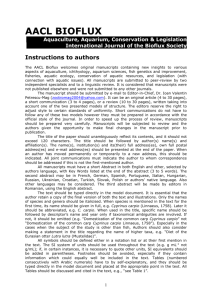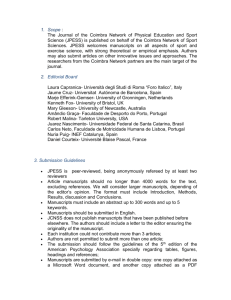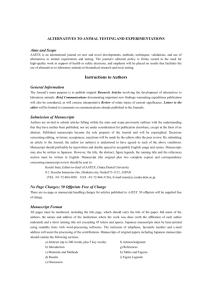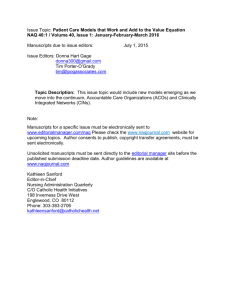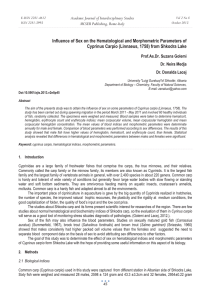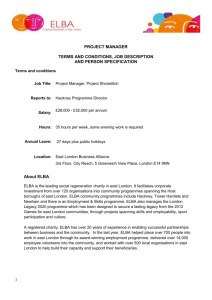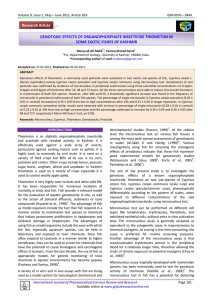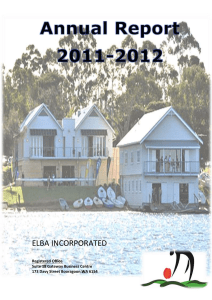Instructions to authors - Extreme Life, Biospeology & Astrobiology
advertisement
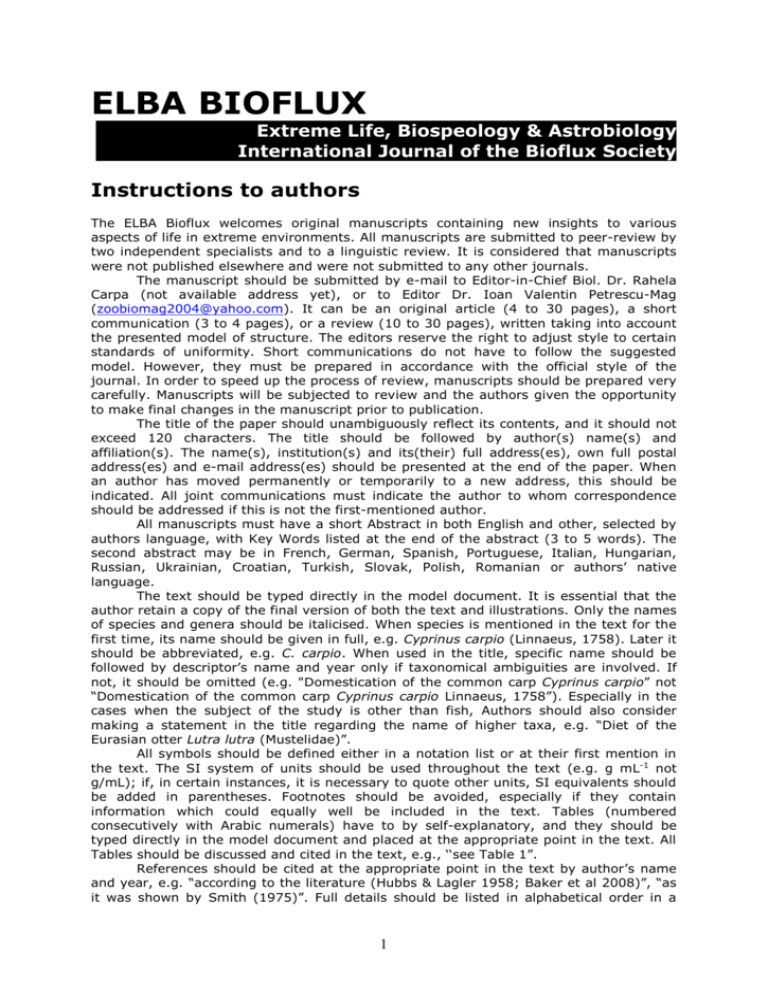
ELBA BIOFLUX Extreme Life, Biospeology & Astrobiology International Journal of the Bioflux Society Instructions to authors The ELBA Bioflux welcomes original manuscripts containing new insights to various aspects of life in extreme environments. All manuscripts are submitted to peer-review by two independent specialists and to a linguistic review. It is considered that manuscripts were not published elsewhere and were not submitted to any other journals. The manuscript should be submitted by e-mail to Editor-in-Chief Biol. Dr. Rahela Carpa (not available address yet), or to Editor Dr. Ioan Valentin Petrescu-Mag (zoobiomag2004@yahoo.com). It can be an original article (4 to 30 pages), a short communication (3 to 4 pages), or a review (10 to 30 pages), written taking into account the presented model of structure. The editors reserve the right to adjust style to certain standards of uniformity. Short communications do not have to follow the suggested model. However, they must be prepared in accordance with the official style of the journal. In order to speed up the process of review, manuscripts should be prepared very carefully. Manuscripts will be subjected to review and the authors given the opportunity to make final changes in the manuscript prior to publication. The title of the paper should unambiguously reflect its contents, and it should not exceed 120 characters. The title should be followed by author(s) name(s) and affiliation(s). The name(s), institution(s) and its(their) full address(es), own full postal address(es) and e-mail address(es) should be presented at the end of the paper. When an author has moved permanently or temporarily to a new address, this should be indicated. All joint communications must indicate the author to whom correspondence should be addressed if this is not the first-mentioned author. All manuscripts must have a short Abstract in both English and other, selected by authors language, with Key Words listed at the end of the abstract (3 to 5 words). The second abstract may be in French, German, Spanish, Portuguese, Italian, Hungarian, Russian, Ukrainian, Croatian, Turkish, Slovak, Polish, Romanian or authors’ native language. The text should be typed directly in the model document. It is essential that the author retain a copy of the final version of both the text and illustrations. Only the names of species and genera should be italicised. When species is mentioned in the text for the first time, its name should be given in full, e.g. Cyprinus carpio (Linnaeus, 1758). Later it should be abbreviated, e.g. C. carpio. When used in the title, specific name should be followed by descriptor’s name and year only if taxonomical ambiguities are involved. If not, it should be omitted (e.g. "Domestication of the common carp Cyprinus carpio” not “Domestication of the common carp Cyprinus carpio Linnaeus, 1758”). Especially in the cases when the subject of the study is other than fish, Authors should also consider making a statement in the title regarding the name of higher taxa, e.g. “Diet of the Eurasian otter Lutra lutra (Mustelidae)”. All symbols should be defined either in a notation list or at their first mention in the text. The SI system of units should be used throughout the text (e.g. g mL-1 not g/mL); if, in certain instances, it is necessary to quote other units, SI equivalents should be added in parentheses. Footnotes should be avoided, especially if they contain information which could equally well be included in the text. Tables (numbered consecutively with Arabic numerals) have to by self-explanatory, and they should be typed directly in the model document and placed at the appropriate point in the text. All Tables should be discussed and cited in the text, e.g., ‘‘see Table 1”. References should be cited at the appropriate point in the text by author’s name and year, e.g. “according to the literature (Hubbs & Lagler 1958; Baker et al 2008)”, “as it was shown by Smith (1975)”. Full details should be listed in alphabetical order in a 1 reference list. All names written with non-Roman alphabets should be transliterated (not transcribed) according to international standards. All titles in languages other than English should be translated to English and given in parentheses. More than 80% from references should be taken from the principal flux of information (ISI journals, journals indexed in the International Databases) or books having ISBN code. The DOI (digital object identifier) number should be also provided when only it is possible. References should be arranged as following: Kyne P. M., Courtney A. J., Bennet M. B., 2008 Aspects of reproduction and diet of the Australian endemic skate Dipturus polyommata (Ogilby) (Elasmobranchii: Rajidae), by-catch of a commercial prawn trawl fishery. J Fish Biol 72:61-77. doi: 10.1111/j.1095-8649.2007.01655.x Berg L. S., 1949 [Freshwater fishes of the USSR and adjacent countries]. Izd. AN SSSR, Moscow-Leningrad [in Russian]. Goryczko K., 2000 [The rainbow trout Oncorhynchus mykiss]. In: [The freshwater fishes of Poland]. Brylińska M. (ed.), pp. 428-430. PWN, Warsaw [in Polish]. Authors may find it useful to check recent issues of ELBA Bioflux for all details of style and format (available at: http://www.elba.bioflux.com.ro). Any related questions should be addressed to Editor-in-Chief Biol. Dr. Rahela Carpa (not available address yet), or to Editor Dr. Ioan Valentin Petrescu-Mag (zoobiomag2004@yahoo.com). 2
